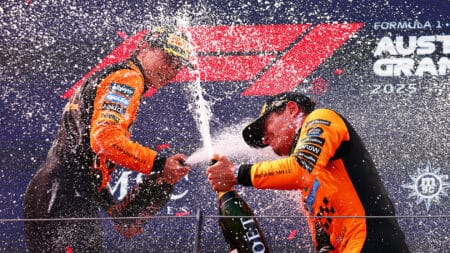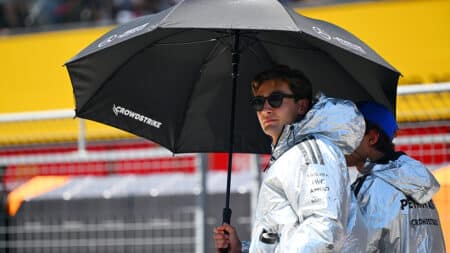
'Not even the best F1 driver in his family' - Pain of being the other Schumacher
He has always been overshadowed by his older brother but Ralf Schumacher’s 50-year story is more layered, and more human, than the stats alone suggest, says Matt Bishop
Who says sport and politics don’t mix? An Italian victory in the mid-30s was one of sport’s most significant
It was partly the way he drove his Alfa past the home favourites, but mostly the political context that made Tazio Nuvolari’s victory in the 1935 German Grand Prix one of motor racing’s most significant. The result was an example of the thrilling unpredictability of sport, and it sent shockwaves that dented the National Socialist pride.
Today marks the anniversary of Nuvolari’s passing, in 1953, and this weekend the Oldtimer Grand Prix visits the venue of the Italian’s greatest victory. It is a place of political and sporting gravity.
Nürburgring, July 28
Adolf Hitler was first to take advantage of the opportunity offered by modern international sport to ambitious leaders looking for ways of demonstrating the irresistible power of the forces at their command. Very soon after he and his National Socialists came to power in 1933, all sports organisations connected to religions and other political parties were banned outright. The head of the existing national sports office, Theodor Lewald, was removed when he was found to have a Jewish grandmother. Into Lewald’s place, charged with developing a new generation of champions, came Hans von Tschammer und Osten, a member of the SA, the paramilitary wing of the Nazi party. The new Reichssportführer sat at the head of the Deutscher Reichsbund für Leibesübungen (DRL), the Third Reich’s national league of physical education, an umbrella body to which all individual sports bodies now reported.
If Hitler’s athletes were to be promoted as higher beings, thus fulfilling the Führer’s belief in the inherent superiority of the Aryan race, then so were German engineers. Before 1914, teams from Mercedes-Benz and Opel had competed successfully in Grand Prix racing. Between 1918 and 1933, however, the French and the Italians fought for supremacy: Bugatti and Delage versus Alfa Romeo and Maserati. By giving his blessing to a revived Mercedes team and the new Auto Union outfit, Hitler brought Germany back into the equation.
On his order, the two teams divided an annual grant of 450,000 Reichsmarks (the equivalent of about £2.5 million in today’s values) between them, leaving each to find at least four times that sum from their own resources in order to meet their racing budgets. The high standards applied to German engineering were seen in the supercharged straight-eight Mercedes W25 and Dr Ferdinand Porsche’s mid-engined V16 Auto Union Type A. Making their debuts in 1934, they seemed to represent a leap into a new era of technology.

He has always been overshadowed by his older brother but Ralf Schumacher’s 50-year story is more layered, and more human, than the stats alone suggest, says Matt Bishop

Cadillac's Formula 1 entry was approved just 364 days before its first grand prix weekend. We took a look inside its Silverstone base to find out how it's building a brand new team from scratch

Describing this year's championship race as a 'battle' might be slightly over-egging it, writes James Elson

You had to read between the lines at the 2025 Austrian Grand Prix as George Russell dropped hints over about his dissatisfaction, and F1 sent a message to FIA president Mohammed Ben Sulayem